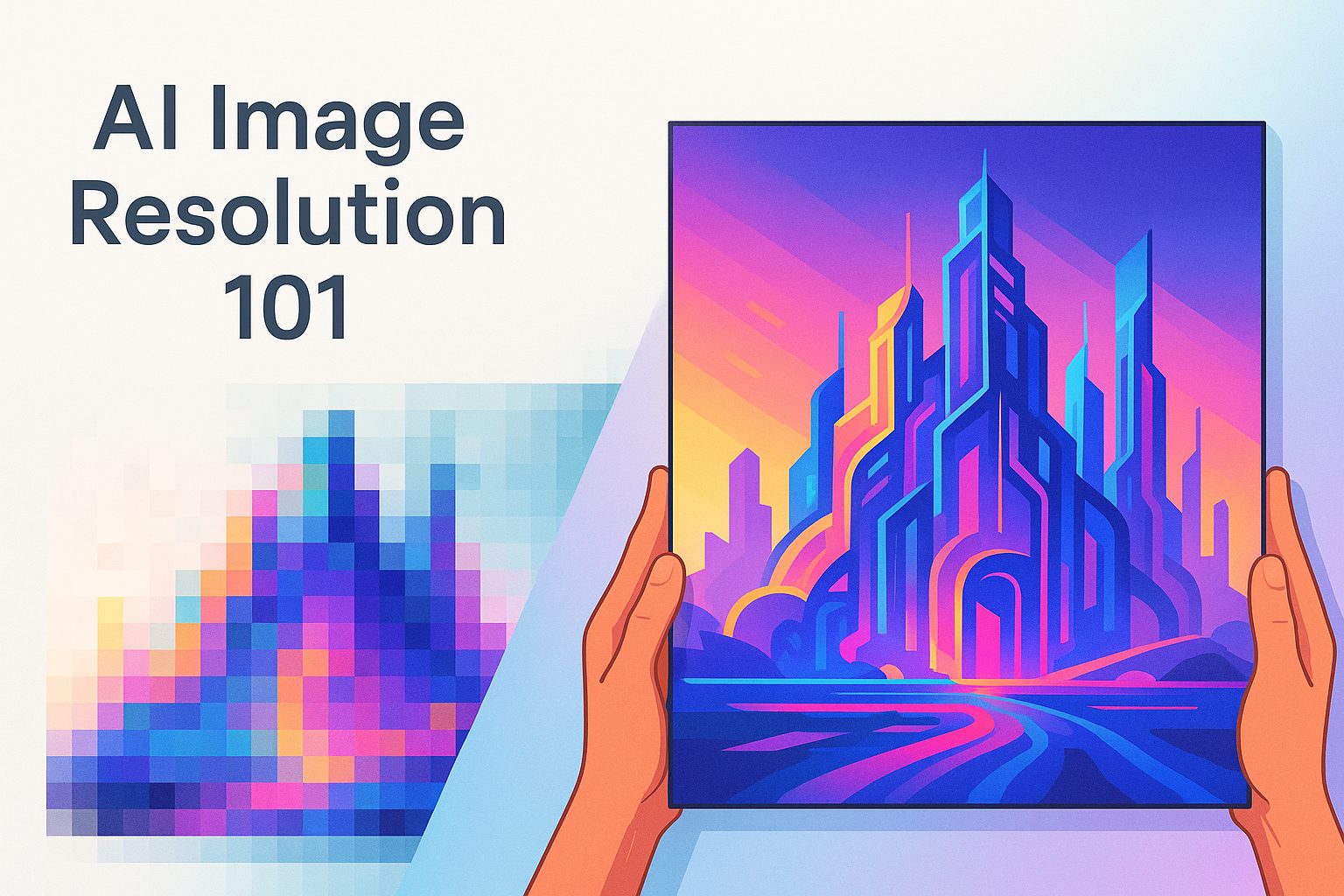TL;DR — A jaw‑dropping AI artwork still needs enough pixels to survive the jump from screen to fabric, canvas, or metal. This crash course demystifies DPI vs PPI, shows you exactly how many pixels each product really needs, and walks you through the fastest way to upscale your Midjourney or Stable Diffusion images so they look razor‑sharp at any size.
1. Pixels, DPI, and PPI—What’s the Difference?
| Term | What It Means | Everyday Analogy |
|---|---|---|
| Pixel | The smallest square of color in a digital image. Resolution is width × height in pixels. | A single tile in a mosaic. |
| PPI (Pixels Per Inch) | How many of those pixels are packed into one inch on the screen or print. Higher = denser detail. | Tiles per inch of the mosaic. |
| DPI (Dots Per Inch) | Printer term: how many ink dots are sprayed per inch. In practice, we treat 300 PPI files as 300 DPI prints. | Number of paint drops the artist uses to fill each tile. |
Rule of thumb: For professional‑quality prints you want your final design at 300 PPI/DPI at the printed size.
2. Why AI Generators Start Small
Most text‑to‑image engines default to 512×512 px or 1024×1024 px so they can render fast even on modest GPUs. Great for Instagram—terrible for wall art. At 300 DPI, a 512 px piece prints at just 1.7 inches; 1024 px gives you 3.4 inches. Anything bigger turns into a blurry mess.
Good news: You don’t need to tweak your prompts for higher native resolution—you can upscale after generation without losing style fidelity.
3. Pixel Math Made Simple
Formula: Required pixels = (print size in inches) × 300
| Product | Common Print Area | Minimum Pixels Needed |
| Phone case | 3 × 6 in | 900 × 1800 px |
| Mouse pad | 9 × 7 in | 2700 × 2100 px |
| Unisex Tee (front) | 12 × 15 in | 3600 × 4500 px |
| 12 × 18 in poster | 12 × 18 in | 3600 × 5400 px |
| 24 × 36 in canvas | 24 × 36 in | 7200 × 10 800 px |
4. Upscaling Options Compared
| Method | Effort | Quality | Cost | Best Use Case |
| Photoshop “Image Size” | Manual | ★★☆☆☆ (adds blur) | License fee | Minor enlargements (<2×) |
| Traditional resamplers (Bicubic, Lanczos) | Manual | ★★☆☆☆ | Free | Web graphics, not print |
| Topaz Gigapixel / ON1 Resize AI | Install & tweak | ★★★★☆ | $99+ | Designers with GPU rigs |
| Free web upscalers | Drag‑and‑drop | ★★☆☆☆ | Ads / watermark | Small jobs, low budget |
| Our 8× AI Upscaler | One‑click in browser | ★★★★★ (recreates micro‑detail) | Free with every print | Every AI image, from 512 px to poster size |
Why AI Upscaling Wins
AI super‑resolution models don’t just stretch pixels—they hallucinate plausible texture (fur, fabric weave, brush strokes) based on your original. That means crisp edges on lettering and sharp gradients on large murals.
5. Step‑by‑Step: Turn 512 px Into a Masterpiece
- Choose a Product
- Select target size—e.g., 24 × 36 in canvas, large t-shirt, etc
- Upload PNG (straight from Midjourney or any other AI Image Creator).
- Our system auto‑detects required resolution → triggers upscale.
- Checkout. Total time: under 60 seconds.
6. FAQ
Q: Can I upscale beyond 8×?
Yes. It leverages a two‑pass algorithm for images that need billboard‑level resolution.
Q: Does upscaling change colors?
Colors stay in sRGB; we apply perceptual color correction to maintain vibrancy in CMYK print.
Q: Will noise get amplified?
Our denoiser runs after upscaling to remove grain while preserving detail.
Ready to Print Your AI Art?
Choose a product, upload your image, and we’ll handle the upscaling automatically—no pixel math required.
👉 Choose Your Product & Get Started
Turn your pixels into products in under a minute!
